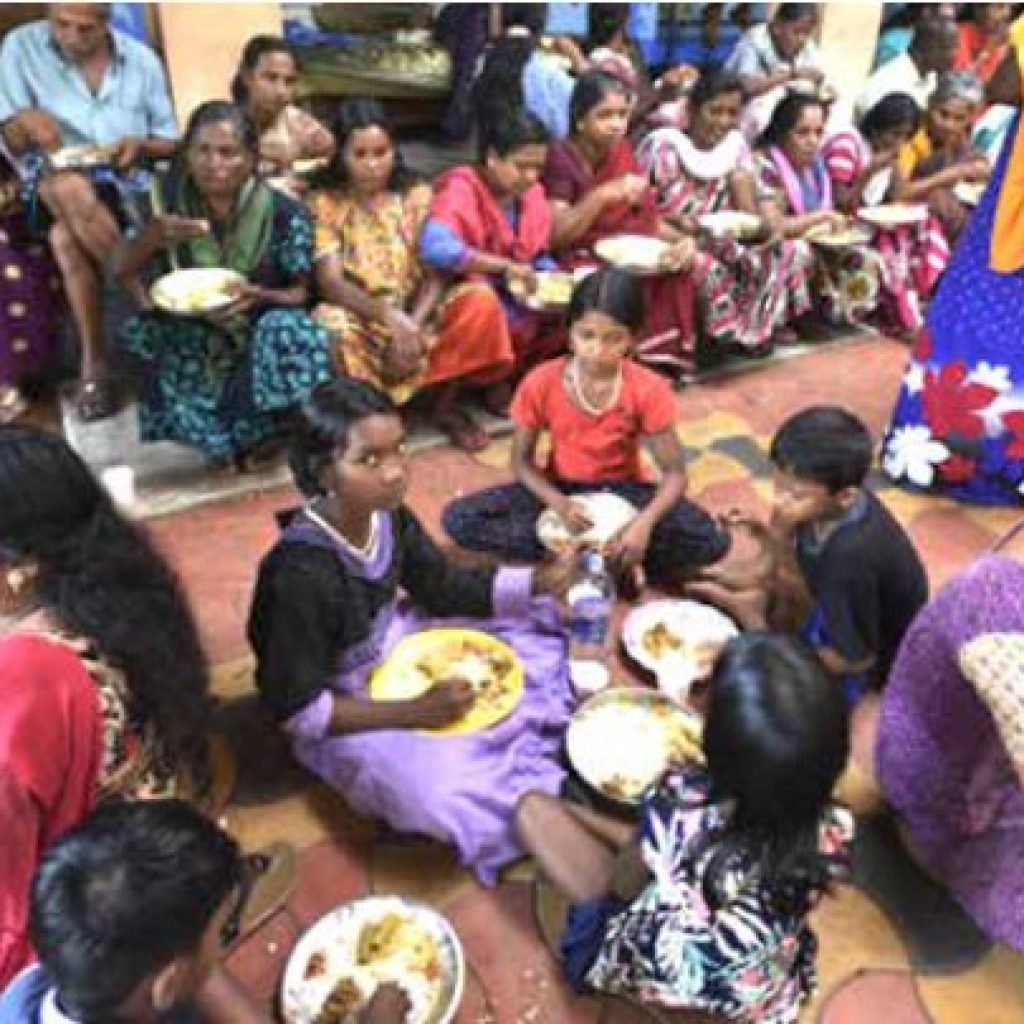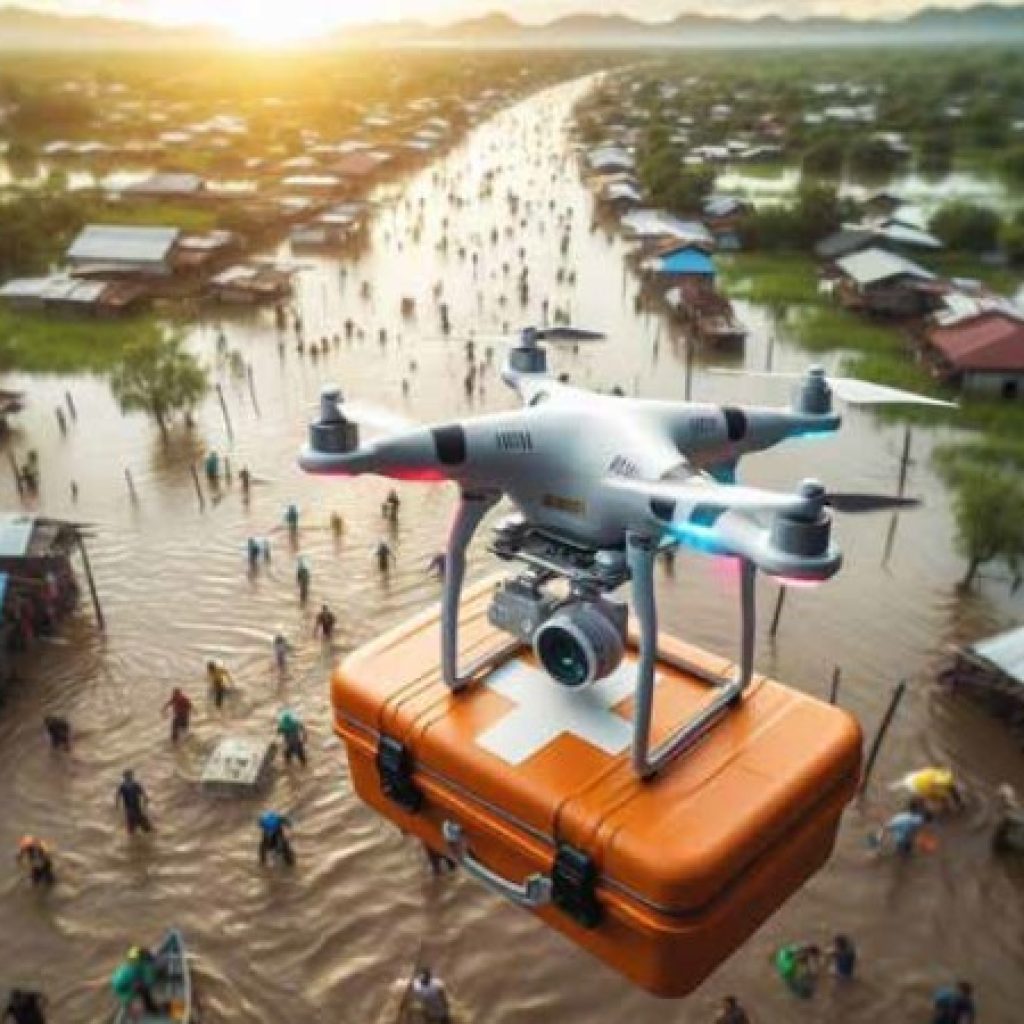Appu KG is a dedicated disaster management professional who has earned a Master’s degree in Disaster Management from the prestigious Tata Institute of Social Sciences (TISS). With a strong academic foundation and a wealth of practical experience, Appu has honed his expertise in disaster risk reduction, emergency
response, and resilience-building strategies. His fieldwork spans across diverse regions, where he has
actively contributed to disaster preparedness and recovery efforts, showcasing his commitment to safeguarding vulnerable communities. Appu’s comprehensive understanding of disaster dynamics and his hands-on experience make him a valuable asset in the field of disaster management.
This article explores Kerala’s evolution into a global model for flood management and disaster resilience, particularly after the devastating floods of 2018. It highlights the state’s strategic approach, which includes the use of modern technology such as real-time flood monitoring systems, early warning mechanisms, and drones for damage assessment. Community participation, policy reforms, and environmental conservation efforts have also played crucial roles in building long-term resilience. By examining these initiatives, the article showcases how Kerala has successfully transformed its flood management framework to better protect lives, livelihoods, and the environment.
Floods are one of the most severe and frequent natural disasters globally, often leading to devastating consequences for human lives, property, and the environment. Kerala, a southern Indian state, has been particularly vulnerable to floods due to its geographical location, dense river network, and tropical climate. In recent years, Kerala has experienced severe floods, with the 2018 and 2019 monsoon floods leaving behind a trail of destruction. However, these calamities also prompted a significant shift in how Kerala approached flood management, resulting in a more disaster-resilient model that has gained international recognition.
Kerala’s model for flood management has evolved over time, integrating technology, policy reforms, community participation, and environmental conservation. This article examines the state’s transformation from a flood-prone region to a global example of disaster resilience. We will explore how Kerala has effectively responded to floods, improved preparedness, and developed sustainable strategies to manage the long-term impact of such natural disasters.

Geographical and Climatic Vulnerability of Kerala
Kerala’s geographical position, nestled between the Arabian Sea on the west and the Western Ghats on the east, makes it particularly prone to floods. The Western Ghats, a mountain range that runs parallel to the coast, receive heavy rainfall during the monsoon season, leading to high water levels in Kerala’s numerous rivers and lakes. This topographical structure, coupled with a tropical monsoon climate, makes Kerala highly susceptible to flooding, especially during the southwest monsoon from June to September.
The state’s unique landscape also includes a network of rivers, lakes, and backwaters, which further increase the risk of floods. With 44 rivers crisscrossing the state, the risk of riverine flooding is high during intense monsoon rains. Several regions, such as Kuttanad in Alappuzha district, lie below sea level, making them particularly vulnerable to floods.
However, while Kerala’s topography and climate contribute to its flood vulnerability, human activities such as unregulated construction, deforestation, and poor urban planning have exacerbated the impact of floods. The rapid expansion of urban areas, often without adequate drainage infrastructure, has led to increased waterlogging during heavy rains, further intensifying the problem.
The 2018 Kerala Floods: A Disaster That Changed Everything
The 2018 floods in Kerala were among the worst in the state’s history, marking a turning point in its approach to disaster management. Unusually high monsoon rainfall, coupled with the mismanagement of dam water releases, led to catastrophic flooding across most of the state. Heavy rains caused several rivers, including the Periyar and Pamba, to overflow, submerging large areas and affecting almost all districts of Kerala.
More than 400 people lost their lives, and over a million residents were displaced from their homes. The floods caused widespread destruction of infrastructure, homes, agricultural land, and public utilities, with the economic loss estimated at around Rs 40,000 crores (approximately $5.5 billion). Entire towns and villages were inundated, with essential services like transportation, healthcare, and education coming to a standstill.

The disaster highlighted several critical gaps in Kerala’s flood management system:
- Inadequate Early Warning Systems: There was a lack of accurate early warning systems that could provide timely information about impending floods.
- Mismanagement of Dam Releases: The release of water from dams during peak rainfall periods contributed significantly to the floods.
- Unregulated Urbanization: Rapid urban growth, without sufficient planning for drainage and flood prevention, exacerbated the impact of the floods.
Despite the devastation, the 2018 floods served as a wake-up call for Kerala. The disaster acted as a catalyst for change, leading to a comprehensive reassessment of the state’s flood management policies and practices. - Technology-Driven Solutions: Modernizing Flood Management
One of the significant shifts in Kerala’s flood management strategy has been the adoption of modern technology to improve flood forecasting, monitoring, and early warning systems. The use of technology has significantly enhanced the state’s ability to predict and respond to floods, minimizing the damage and loss of life.
Real-Time Flood
Monitoring Systems
Post-2018, Kerala has implemented real-time flood monitoring systems that utilize satellite data, Geographic Information System (GIS) mapping, and hydrological models. These systems allow authorities to monitor water levels in rivers, lakes, and dams in real-time, providing early warnings about potential flooding.
The Kerala State Disaster Management Authority (KSDMA) has worked closely with organizations like the Indian Space Research Organisation (ISRO) to develop accurate models that can predict rainfall patterns and river flows. These models use data from weather satellites and ground-based sensors to generate real-time information on water levels and potential flood risks. This data is crucial for decision-making during the monsoon season, allowing local authorities to take preventive measures such as issuing evacuation orders and preparing emergency shelters.
Early Warning Systems
The introduction of early warning systems has been a game-changer in Kerala’s flood preparedness. These systems provide timely alerts to local authorities and the public about the possibility of floods. The KSDMA issues alerts based on real-time data, which are disseminated through multiple channels, including SMS, social media, and radio broadcasts.
Early warning systems are particularly important for communities living in flood-prone areas, as they allow residents to evacuate in advance and take necessary precautions to protect their homes and belongings. The ability to receive real-time updates has significantly improved Kerala’s disaster preparedness, reducing the impact of floods on human lives.
Drone Technology for Post-Flood Assessment
Drones have become an essential tool in post-flood assessment and rescue operations in Kerala. After a flood, drones are deployed to capture aerial footage of affected areas, providing authorities with a clear view of the damage. This technology is particularly useful in areas that are difficult to access by road due to waterlogging or collapsed infrastructure.
The use of drones allows for quicker and more accurate assessments of the damage, enabling authorities to prioritize rescue and relief operations. Drones are also used to identify areas where relief supplies, such as food and medical aid, are most needed, ensuring that resources are distributed efficiently.
Community Involvement: The Backbone of Kerala’s Flood Resilience
While technology has played a crucial role in Kerala’s flood management efforts, the involvement of local communities has been equally important. Kerala’s disaster resilience model relies heavily on community-driven initiatives, where local residents play an active role in flood preparedness, response, and recovery.
Community Emergency Response Teams (CERTs)
One of the most successful initiatives in Kerala’s flood management strategy has been the formation of Community Emergency Response Teams (CERTs). These teams are made up of local volunteers who are trained in first aid, rescue operations, and disaster management. CERTs are the first responders during floods, helping to evacuate residents, provide medical assistance, and coordinate relief efforts.
The success of CERTs lies in their ability to mobilize quickly and respond to emergencies before external help arrives. These teams are familiar with the local terrain and are often better positioned to provide immediate assistance to flood-affected communities. Training programs are regularly conducted to equip CERT members with the necessary skills to handle various disaster scenarios, ensuring that they are prepared for any eventuality.
Role of Fishermen in Rescue Operations
Kerala’s fishermen emerged as unsung heroes during the 2018 floods, using their boats to rescue thousands of people stranded in flooded areas. Their knowledge of the local waters, coupled with their quick response, made them invaluable assets in the state’s disaster response efforts.
Since then, fishermen have been formally integrated into Kerala’s flood management plans. Many have received additional training in disaster response and are now part of the state’s official rescue teams. Their involvement highlights the importance of utilizing local knowledge and resources in disaster management.
Public Awareness Campaigns
Raising public awareness about flood preparedness is a critical component of Kerala’s disaster management strategy. The government, in collaboration with local organizations and schools, has launched extensive awareness campaigns to educate residents about flood risks and safety measures. These campaigns focus on teaching people how to protect their homes, what to do during a flood, and how to access emergency services.
One of the most effective ways Kerala has promoted public awareness is through mock drills. These drills simulate flood scenarios and teach residents how to respond in an emergency. They also provide an opportunity for CERTs and local authorities to test their preparedness and identify areas for improvement.
Policy Reforms:
Strengthening Flood
Management Frameworks
In the aftermath of the 2018 floods, Kerala’s government recognized the need for stronger policy frameworks to manage floods and other natural disasters. Several key reforms have been implemented to ensure that the state is better prepared for future floods.
Integrated Water
Resources Management (IWRM)
One of the most significant reforms has been the adoption of Integrated Water Resources Management (IWRM), a comprehensive approach to managing Kerala’s water resources. IWRM aims to coordinate the management of rivers, dams, reservoirs, and other water bodies to prevent sudden releases of water that could contribute to flooding.
Under IWRM, dam authorities, disaster management agencies, and local governments work together to regulate water levels in reservoirs and release water in a controlled manner. This prevents the sudden surge in river levels that often leads to floods during the monsoon season.
Revised Urban Planning and Building Codes
The rapid expansion of urban areas in Kerala has contributed to the state’s flood vulnerability. In many cities and towns, construction has taken place in flood-prone areas without adequate planning for drainage and flood prevention. To address this issue, Kerala has introduced new urban planning regulations that restrict construction in floodplains and low-lying areas.
The government has also revised building codes to ensure that new constructions are flood-resistant. For example, buildings in flood-prone areas must be constructed on raised platforms to minimize water damage. Additionally, the use of permeable materials in construction is encouraged to reduce runoff and allow rainwater to seep into the ground.
Flood-Resistant
Infrastructure Development
Another critical policy reform has been the investment in flood-resistant infrastructure. The government has prioritized the construction of stronger embankments, improved drainage systems, and flood-resistant housing in vulnerable areas. These infrastructure projects are designed to mitigate the impact of floods and ensure that essential services, such as transportation and healthcare, are not disrupted during a disaster.
Post-Flood Recovery and Rehabilitation
Once the immediate crisis of a flood has been managed, the focus shifts to recovery and rehabilitation. Kerala has developed a comprehensive approach to post-flood recovery, with a strong emphasis on rebuilding in a way that enhances future resilience.
Housing and Infrastructure
Reconstruction
The destruction of homes and infrastructure is one of the most visible consequences of floods. In the aftermath of a flood, the government provides financial assistance to affected families to rebuild their homes. In many cases, houses are rebuilt with stronger, flood-resistant materials to prevent future damage.
The reconstruction of public infrastructure, such as roads, bridges, and schools, is also a priority. The government has adopted a “build back better” approach, ensuring that newly constructed infrastructure is more resilient to future floods.
Livelihood Restoration
Floods often have a devastating impact on livelihoods, particularly in rural areas where agriculture is the primary source of income. To support flood-affected communities, Kerala has implemented several livelihood restoration programs. These programs provide financial assistance, job creation opportunities, and training in alternative livelihoods to help people recover economically.
For example, farmers whose crops were destroyed by floods receive compensation and access to seeds and equipment to replant their fields. Fishermen whose boats were damaged receive assistance to repair or replace their equipment. These efforts are essential for ensuring that communities can recover quickly and sustainably after a disaster.
Environmental Conservation: A Long-Term Flood Mitigation Strategy
One of the key lessons Kerala has learned from its flood experiences is the importance of preserving and restoring natural ecosystems that act as flood buffers. Wetlands, forests, and mangroves play a crucial role in absorbing excess rainwater, stabilizing soil, and preventing runoff into rivers.
Wetland and Mangrove Restoration
Wetlands and mangroves are natural flood control systems that absorb large amounts of water and release it gradually. However, many of these ecosystems have been degraded or destroyed due to human activities such as construction and deforestation. Recognizing their importance, Kerala has launched several projects to restore wetlands and mangroves in flood-prone areas.
Restoring these ecosystems not only helps prevent floods but also promotes biodiversity and supports local communities that rely on wetlands and mangroves for their livelihoods.
Afforestation Programs
Forests act as natural barriers against floods by absorbing rainwater, stabilizing soil, and reducing runoff. Deforestation, particularly in the Western Ghats, has contributed to soil erosion and increased flood risk in Kerala. To combat this, the state’s forest department has launched afforestation programs aimed at planting trees in flood-prone areas, especially along riverbanks and in hilly regions.
These programs not only reduce flood risk but also help mitigate the effects of climate change, which is expected to increase the frequency and intensity of floods in the future.
The Role of International Collaboration
Kerala’s flood management model has benefited significantly from international collaboration. Several global organizations, including the United Nations Development Programme (UNDP) and the World Bank, have provided financial and technical support to Kerala’s disaster management programs. These collaborations have allowed Kerala to access advanced technologies, best practices, and expertise from countries that have faced similar flood challenges.
Learning from the
Netherlands
One of the most significant collaborations has been with the Netherlands, a country known for its expertise in flood management. The Dutch government has provided technical assistance to Kerala in areas such as river management, flood-resistant infrastructure, and urban planning. The Netherlands’ expertise has helped Kerala develop more sustainable and effective flood management strategies.
Conclusion
Kerala’s transformation into a model for flood management and disaster resilience is a testament to the state’s ability to learn from past experiences and adapt to new challenges. Through a combination of technology, community involvement, policy reforms, and environmental conservation, Kerala has developed a comprehensive approach to flood management that significantly reduces the impact of floods.
While the state’s geographical location and climate make it inherently vulnerable to floods, Kerala’s proactive strategies have helped save lives, protect livelihoods, and build a more resilient society. As climate change continues to increase the frequency and intensity of natural disasters, Kerala’s flood management model serves as an inspiration for other regions facing similar challenges.
By combining modern technology with traditional knowledge and local community involvement, Kerala has shown that disaster resilience is not only achievable but essential in the face of growing environmental threats.






